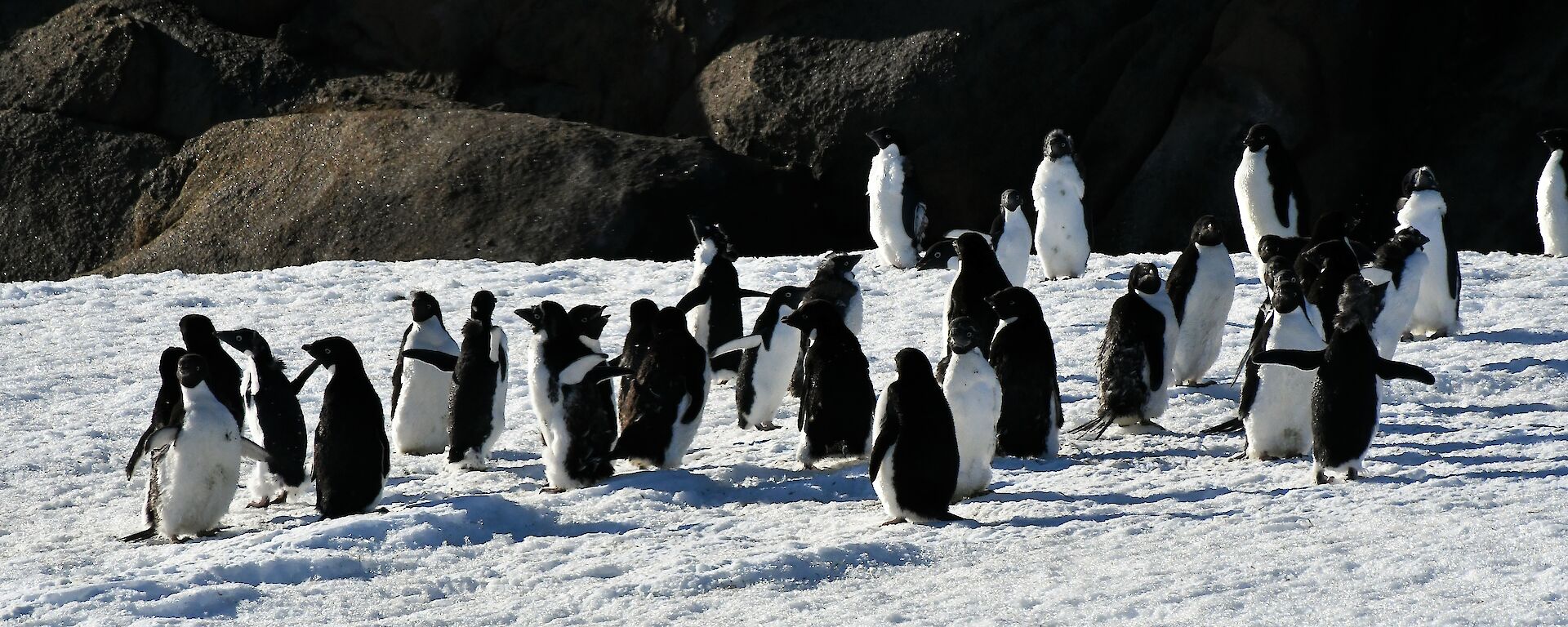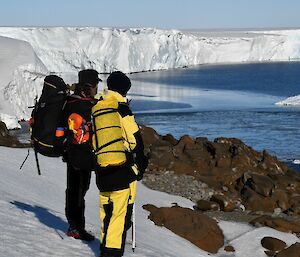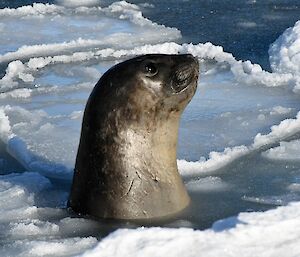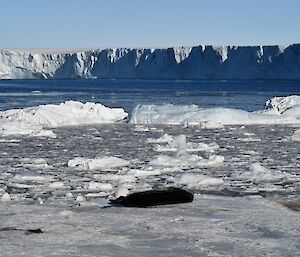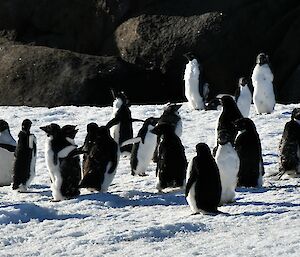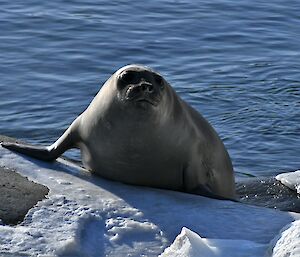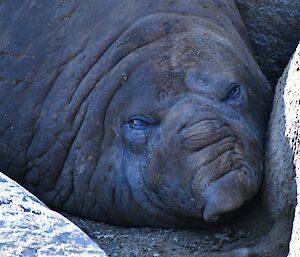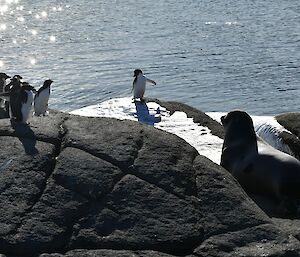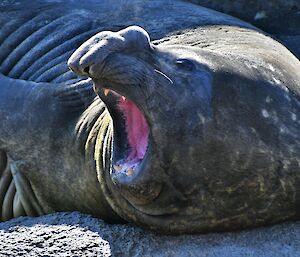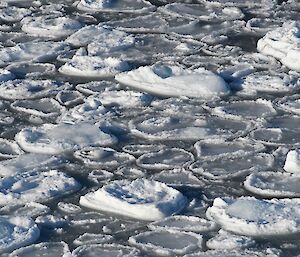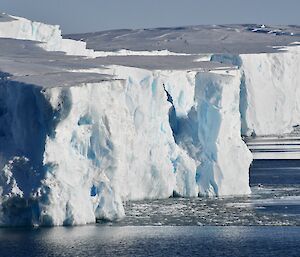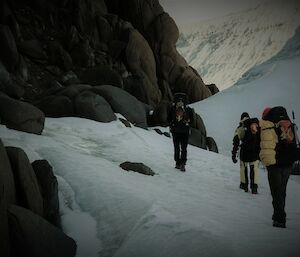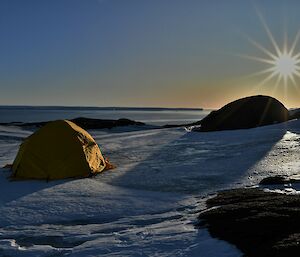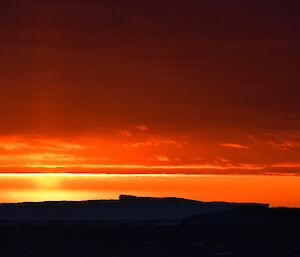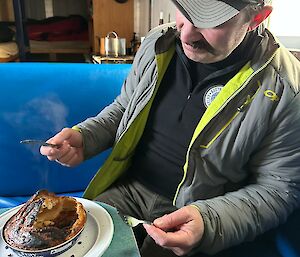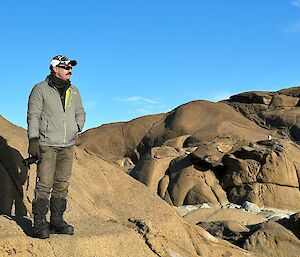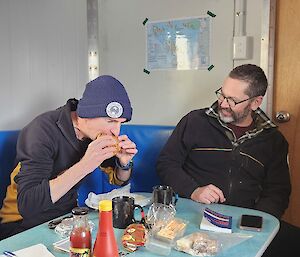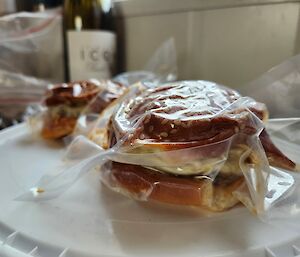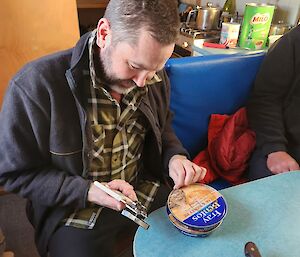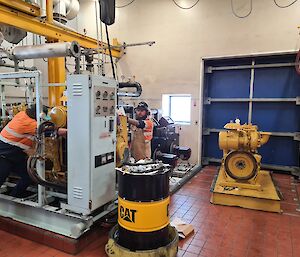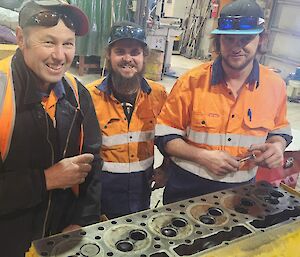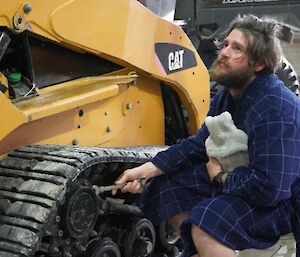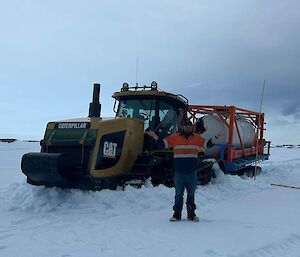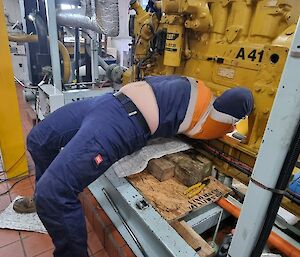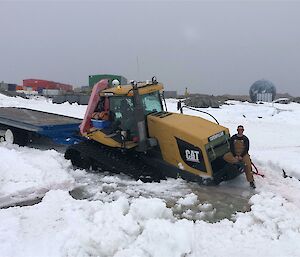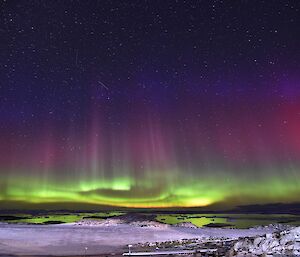A recent trip to the Browning Peninsula resulted in a surprise side trip, this one into the wilderness of the culinary unknown…
On a beautiful sunny morning at Casey (standard) we loaded up Blue Hägglunds with a couple of days equipment for a field travel training trip out to the Browning Peninsula. These multi day/night trips off station are required for all wintering expeditioners in order to develop the skills necessary to safely exist in this place of extremes. Included in the necessities is, of course, food! We have absolutely no reason to complain about food at the station, the choices are many and varied, and chef Claire spoils us with delicious and life sustaining goodness daily. When we do venture out into the field our meals consist of a mix of ‘catch 'n kill’ (left-overs), packaged food (including tinned pies), and pre-frozen meals. Basically whatever we can get our hands on!
Occasionally volunteers step in to give Claire a bit of a break, and this time one of our trip meals was provided by chippie Brad’s Burgers. These generously sized delights were soon to become ‘Brad’s Boiled Browning Burgers’, yes… boiled. All credit for the idea to vacuum seal and pack the burgers must go to our Field Training Officer (FTO) Sean Murray, a wise man indeed. Whilst being pretty amusing, the first attempt at preserving a complete burger identified an immediate need to reduce the vacuum… oops. So much to learn, so little time. The following vacuum ops were conducted successfully, and the burgers were packed along with an Antarctic staple – or Antarctic experience at least – the Fray Bentos tinned steak and kidney pie. Our FTO, and sparky Leigh, had already ticked the tinned pie experience box and elected to firmly pass on a serving. Myself, and the Station Leader Ben, keenly committed to the gastronomical adventure ahead.
Browning Peninsula lies to the west of Casey station and is about 3 hours away by Hägglunds, firstly heading inland, and then driving west across the Peterson Glacier. The peninsula itself is sandwiched between the enormous Peterson and Vanderford glaciers. Apart from the landscape itself, which is quite other-worldly in appearance, there is some amazing wildlife to witness. There are two charted ‘wallows’ located around the coastline where moulting elephant seals haul-out to shed their summer fur and prepare for the winter. Even in their juvenile stage these animals are absolutely huge and it was such a privilege to see, hear, and smell (not so good) them up close. There was also the odd Weddell seal taking time out of the water to rest, along with a few good ‘waddles’ of Adélie penguins, also moulting before heading to sea in the next few weeks.
The ice itself provides so much to look at. From the vastness of the main body that covers the continent, to the towering faces of the ice cliffs with their cracks and caves and myriad of blues, to the glacial faces collapsing into the sea and forming giant icebergs. We are witnessing a transition of seasons right now, and learning about the phases of ice production that will soon cover the bays, and surround Antarctica with it’s winter ice shelf. ‘Grease ice’ is one of the early stages, and looks just like grease, or an oil slick over the surface of the water. We commonly have very slight winds here at Casey and this allows the grease ice to form regularly. Another common form of ice we are seeing at the moment is ‘pancake ice’ which, as you can imagine, resembles pancakes! Not very imaginative names perhaps, but pretty apt for all of us non ice-ologist types.
Back to the important stuff… food! When it comes to survival in the cold, food is known here as the first layer of defence. We always make sure we are well fed prior to heading out, and some of us have developed several layers of defence, for safety of course. After exploring the southern wallow and surrounding area, our first night's dinner was kept fairly simple and consisted of some reheated goulash and rice. It was the second night where the culinary adventure kicked off, and Leigh uttered the phrase that would inspire this article… “how long do you boil a burger”. We take everything (most things) very seriously down here, so the timer was started, and the first two vacuum sealed burgers entered the pot of boiling water. The tinned pies were also loaded into the oven and speculation commenced on timings. Sean was left in charge of the burger boiling, while Leigh was the guinea pig for taste testing! All in all both forms of food were received well. The burgers turned out to be pretty good, and while the pies are probably more of a personal taste thing, Ben and I both got through ours without any difficulty. Many that have sampled the undated, rusty tinned pies will disagree, but I would even eat one again!
That night was topped off with one of the most incredible sunsets I have ever seen. The light layer of cloud burned pink and orange, the water was turned to liquid gold, and the blues of the ancient ice were illuminated as the setting sun lit up the 100 m high face of the Vanderford Glacier. The silhouetted icebergs out at sea is a sight I won’t easily forget. A half crescent moon rose to the south, simultaneously hovering just above the horizon and becoming brighter as the sun disappeared for the day, taking over the watch. The absolute silence away from the station is something special.
I am a lucky man.
Oh yes, the all important answer… 21.5 minutes, at a simmer!
Bruce Dening
Met-Tech, Casey Station

